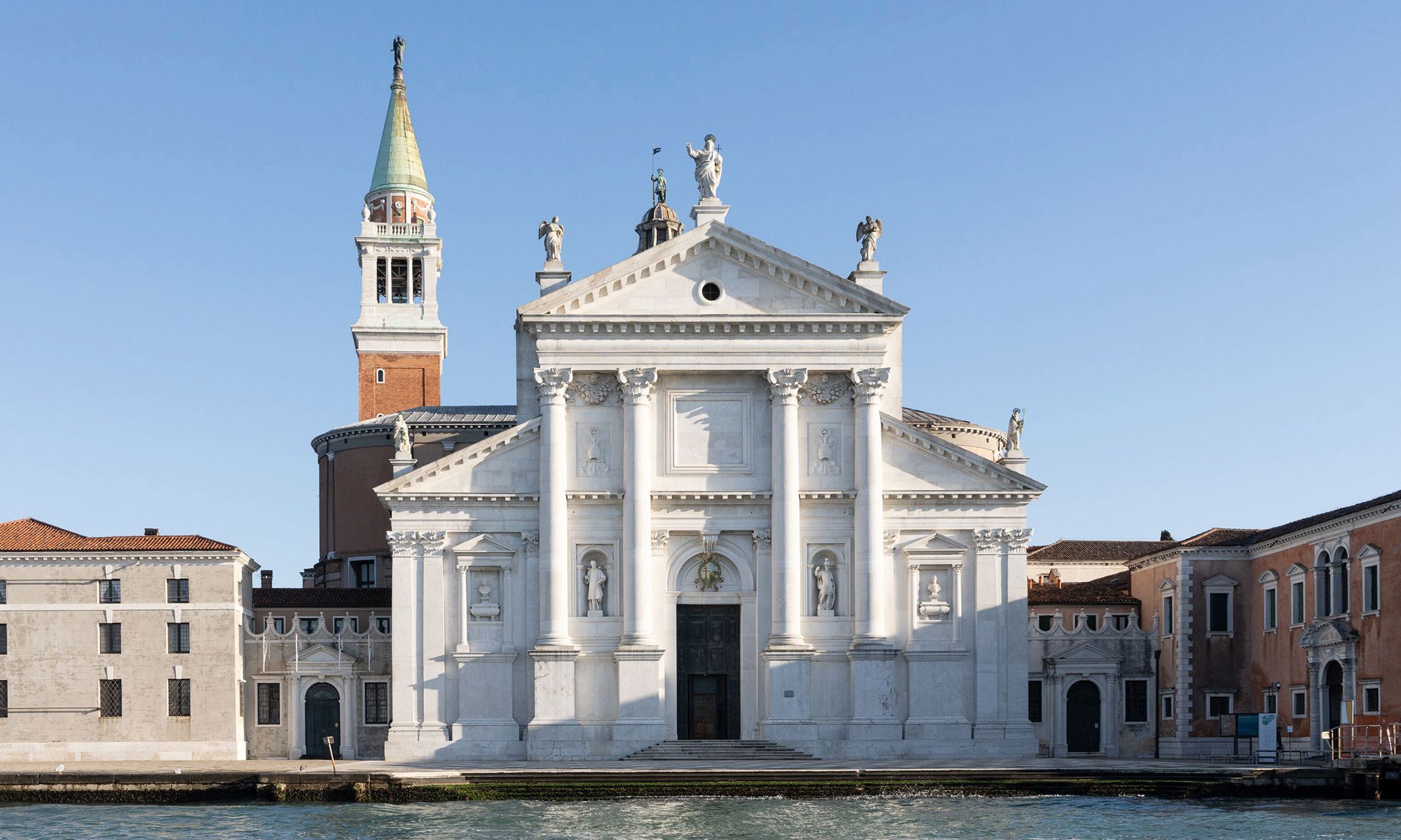The Abbazia di San Giorgio Maggiore was designed by the Renaissance architect Andrea Palladio Courtesy of Sutton Communications
The white-hot glow of the Abbazia di San Giorgio Maggiore can quite literally dazzle visitors as they make their way to the 16th-century Benedictine church from across the water. The church, with its imposing columns and façade made of white marble, was designed by the renowned Renaissance architect Andrea Palladio. Its silhouette at dusk has been captured by Claude Monet, while inside there are paintings by the likes of Tintoretto and Jacopo Bassano. The interior with its chequerboard flooring and engaged columns is surprisingly light and airy. For the duration of the Biennale it will host new works by the Belgian artist Berlinde De Bruyckere, who has created sculptures especially for the nave, sacristy and aisles. Her works are often made from combining materials such as animal skin, wood and metal, and are inspired by religious iconography.
The Complesso dell’Ospedaletto was once a famed concert venue Giacomo Bianco
Another Palladian gem is the Complesso dell’Ospedaletto, which was founded as a hospital for the destitute in the early 16th century. The building has undergone several alterations over the centuries, including the addition of its Baroque façade, and inside there are frescoes and paintings by artists such as Giovanni Battista Tiepolo and Pietro Liberi. The building became famous for its concerts, and its oval-shaped Sala della Musica is a definite highlight. You can almost hear the instruments and patter of dog’s paws running down the steps in some of the late 18th-century trompe l’oeil frescoes by Jacopo Guarana and Agostino Mengozzi Colonna. A group exhibition of contemporary art organised by Fondazione In Between Art Film, Nebula, will draw on these surroundings with an immersive exhibition. The show will take fog—which rolls in off the Venetian lagoon—as its inspiration and will include eight new site-specific video installations.
The largest church in Venice, Santa Maria Gloriosa houses Titian’s tomb and his Pesaro Madonna (1519-26) Peregrine/Alamy Stock Photo
Though not hosting a Biennale exhibition, the spectacular Santa Maria Gloriosa dei Frari is worth a visit in itself because of the absolute masterpieces it contains. As well as being the largest church in Venice, Santa Maria Gloriosa houses Titian’s tomb and one of his greatest works, the near 5m-tall Pesaro Madonna (1519-26). The painting hangs in the basilica for which it was painted five centuries ago and depicts its commissioner Jacopo Pesaro alongside members of his family in a scene showing the Virgin Mary, Christ child and Saint Peter. Although the church’s brick exterior is not as grandiose as others in the city, it more than makes up for it with its interior treats. Beneath its vaulted Gothic ceiling are, among other treasures, a painted wooden sculpture of Saint John the Baptist by Donatello, a white marble pyramid monument to Antonio Canova (pictured above), an exquisitely worked wooden choir screen, and Giovanni Bellini’s Madonna and Child with Saints Nicholas of Bari, Peter, Mark, and Benedict (1488). John Ruskin called the latter one of “the best pictures in the world”, but the same could be said for several examples found in the church.
The Chinese artist Yu Hong's site-specific works are appearing in the Chiesetta della Misericordia Chiesetta della Misericordia of Art Events
“The name’s Misericordia, Chiesetta della Misericordia.” The medieval former church in the Cannaregio district played a brief, albeit thrilling, part in the 1979 James Bond film Moonraker. As Bond, played by Roger Moore, is pursued along the city’s canals, a tourist gondola is sliced in two by the chasing speedboat with the enraptured couple oblivious to the missing front of their boat as they drift towards the Chiesetta. Moore is not the only star in town—if you cast your eyes upward, the church’s ceiling is covered in golden ones painted on a deep blue background. The rest of the space is pared back, with exposed brickwork reflecting the church’s deconsecration in the 1970s. But paintings by the Chinese artist Yu Hong, in the shape of altarpieces, tondos and religious icons, will be filling the empty spots. The site-specific suite of works depict hands, feet and writhing bodies on gold backgrounds painted in the Socialist Realist style that the artist was trained in. The curator Alexandra Munroe says that she has “always envisioned staging a show of Yu Hong’s work in Italy, where the power of her art can engage and contest with the humanist themes of the Italian Baroque, itself a historical source of the Socialist Realism styles that shaped the artist’s foundation.”
• Yu Hong: Another One Bites the Dust, 20 April-24 November

